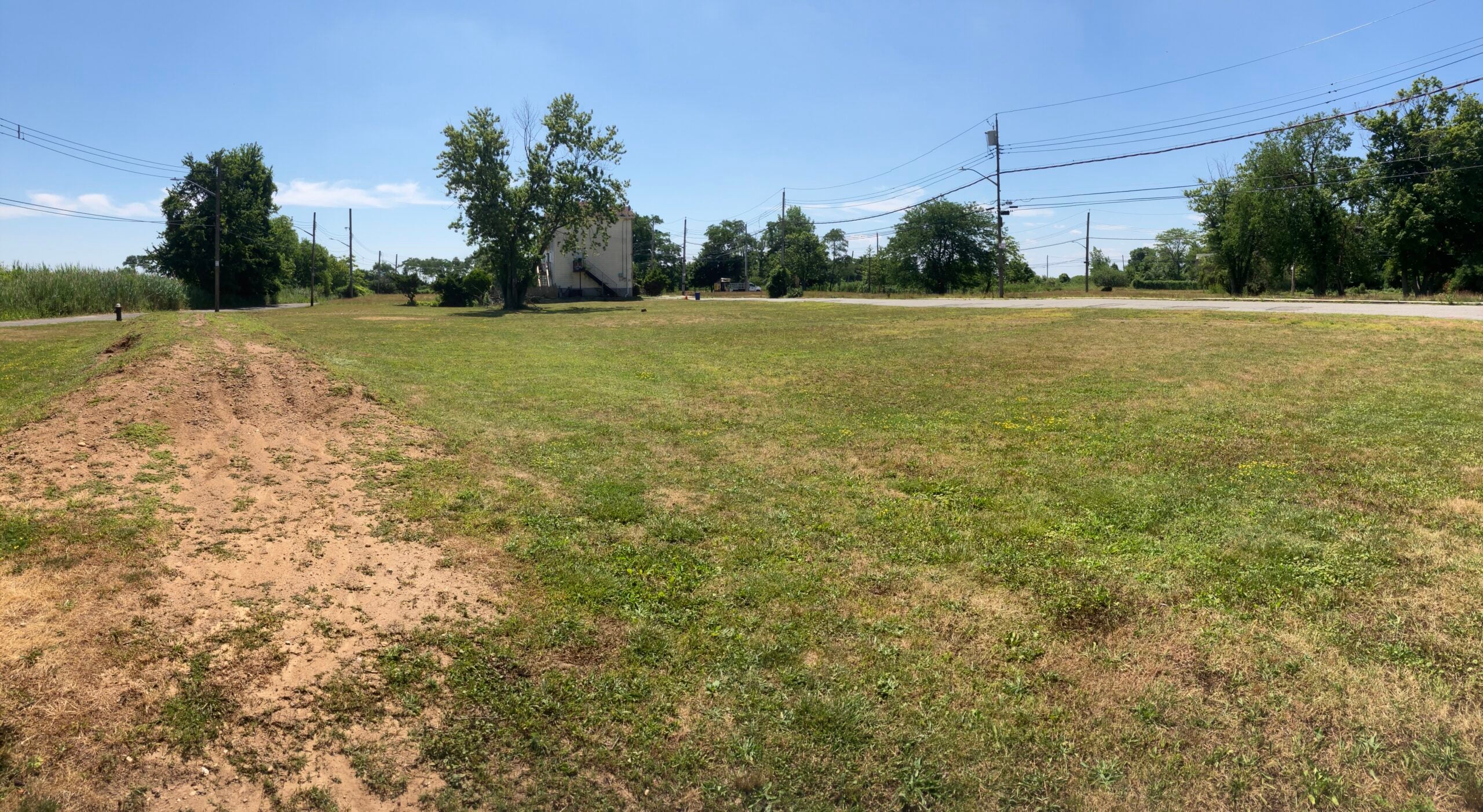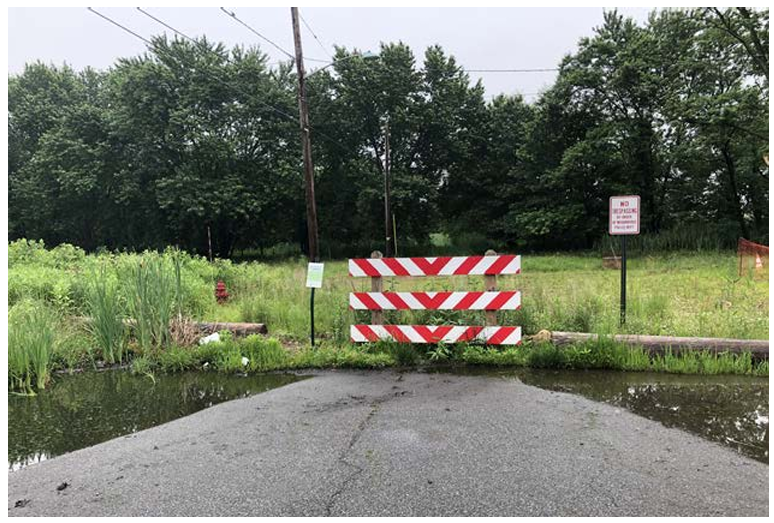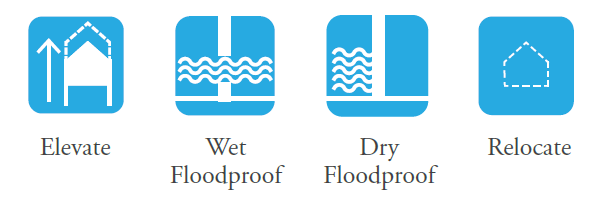Co-authored by: Anushi Garg and Linda Shi
Anushi is the senior analyst for Environmental Defense Fund’s Climate Resilient Coasts & Watersheds program in New York-New Jersey. Linda is the assistant professor for Department of City and Regional Planning at Cornell University.
Flooding is one of our nation’s most common, devastating and growing disasters–and the risk is deeply unequal. Years of disinvestment due to redlining and other racist land use and housing policies have put primarily Black, Indigenous, Latinx and immigrant communities at disproportionately higher risk of flooding and less able to adapt or financially recover after a flood event. Each disaster can devastate individuals and families with the fewest resources and further exacerbate these inequities.
To help communities adapt, we need to expand and modify programs and policies to support the strategic relocation and adaptation of the existing housing stock, in addition to updating building codes and zoning regulations so new construction meets a higher standard of energy efficiency and resiliency.
Environmental Defense Fund (EDF) and Cornell University partnered this past year to better understand the programs that support proactive retrofitting or relocating to accommodate flood risk for a range of housing types in New York City. In particular, we studied cooperative housing, which is minimally researched and often left out of most assistance programs. This research served as a pilot for EDF’s ongoing research on housing assistance programs nationally. Our research is still underway, but we are sharing our preliminary takeaways about opportunities to close the resilient housing gap.
- Expand the scale and scope of proactive flood retrofit and relocation programs
- Increase incentives and adaptation policies for property owners
- Use green infrastructure, energy retrofit, buyouts and flood resilience programs
Expand the scale and scope of proactive flood retrofit and relocation programs
While there are several funding assistance programs and incentives for building efficiency, especially with increased federal funding from the Inflation Reduction Act and Infrastructure Investment and Jobs Act, new programs have only recently been established to support proactive flood resilience versus post-disaster relief. In New York State, only a few flood retrofit programs are available to individual home or building owners prior to a disaster.
The programs that are available include the Resilient Retrofits Loan Program, which offers 1% interest loans in four counties in New York State; HomeFix, which offers forgivable loans for disadvantaged communities to conduct a limited set of resilience measures in NYC only; and Green and Resilient Retrofits, which provides grants and loans to multi-family housing nationally but has limited funding available. FORTIFIED, a unique national resilient retrofits program that started in Alabama but is available nationally, offers opportunities to obtain grants funded through the insurance industry, targeting mitigation of high winds.
While each of these programs has its strengths, their limitations and the lack of public awareness about these programs present challenges to scaling. More needs to be done to expand these incentive programs and assess their performance and impact.
Increase incentives and adaptation policies for property owners
If we want to close the resilient housing gap and support relocation away from areas at risk of flooding, we will need to increase proactive incentives and assistance programs to support a broader array of residents. These programs should be accessible to small and large property owners alike.
Efficient responses that address multiple climate and community needs require ways to combine incentives and public and contractor education so that capital projects can be bundled and more accessible to residential building owners before a storm. We must also work to adapt our land use policies, building codes and zoning approaches that reduce risky construction practices and make room for relocation in climate-safe areas.
Use green infrastructure, energy retrofit, buyouts and flood resilience programs
There are a variety of programs to support improvements of residential properties by implementing green infrastructure, reducing greenhouse gas emissions and mitigating flood risk. However, these programs are typically offered separately despite serving the same types of building owners.
Buyout and relocation programs are also mostly separate from those that ecologically restore properties, despite the significant benefits habitat and floodplain restoration offers to ecosystems and communities. Natural infrastructure, for instance, can reduce flood and erosion risk, decrease temperature, increase quality of life, recreation opportunities and improve biodiversity. This has resulted in many buyout properties being mowed and maintained as it is in perpetuity until funding and public and political will are leveraged to incorporate habitat restoration and make buyout programs more holistic.

In many cases, as was the case with the Oakwood Beach buyout program in Staten Island, funds and a plan for restoration following buyouts were not part of the plan, resulting in a patchwork of homes and lawns maintained and mown in perpetuity. / Credit: Kate Boicourt, Director for EDF’s Climate Resilient Coasts & Watersheds program, NY-NJ.

Following participation in the Blue Acres program, the township of Woodbridge conducted habitat restoration to restore the property to a naturalstate that can absorb more floodwaters. / Credit: Thomas Flynn, Floodplain Administrator, Township of Woodbridge, NJ.
Through our continued research, EDF and Cornell University aim to continue learning from current programs, inform policy and programmatic needs and understand the scale and scope of the resilient housing gap. We also are working to ensure resources reach individuals with the greatest need, through a justice lens. This means communities that are most impacted are able to benefit from these programs through technical support and outreach, considering the cumulative impacts of the landscape of risk at hand, finding ways to redress historic injustices and supporting a more just and equitable transition in areas at risk of flooding.

